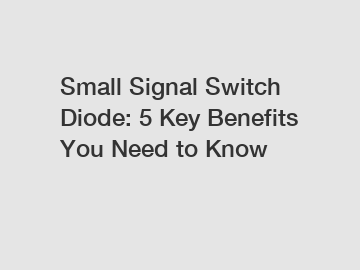How Does Smart Home Technology Price Work?
Smart home technology has revolutionized how we interact with our living spaces, offering convenience, energy efficiency, and enhanced security. However, as exciting as this technology is, understanding how its pricing works can be a complex process. In this blog, we will delve deep into the pricing framework of smart home technology, exploring various factors that influence costs and providing insights for both novice users and tech aficionados alike.
The Cost of Devices
The cost of smart home devices can range from budget-friendly options to high-end products offering advanced functionalities. Smart light bulbs, for instance, can start as low as $10 each, whereas a comprehensive security camera system could set you back several hundred dollars. Pricing varies based on brand, technology, and features. For instance, a basic smart thermostat may cost around $100, while a more advanced system with Wi-Fi connectivity and learning capabilities could exceed $250.
In addition to upfront costs, consider the potential for cost savings. Many smart devices contribute to energy efficiency, which can lower utility bills. Smart thermostats, for example, adapt to your habits and optimize temperature settings, resulting in noticeable savings in the long run. Thus, while the initial price tag might seem steep, the return on investment (ROI) could make it worthwhile.
Installation Expenses
Another important factor to consider in smart home pricing is installation costs. Some devices, like smart plugs or bulbs, are DIY-friendly, requiring minimal setup. In contrast, more complex systems such as smart security cameras or home automation hubs might necessitate professional installation, which can significantly increase your expenses. Depending on the service provider, installation fees can vary widely, sometimes ranging from $50 to several hundred dollars.
Moreover, if your smart home setup involves multiple devices that require integration, hiring a professional may prove beneficial. An expert can streamline the process, ensuring that all devices communicate effectively and function harmoniously.
Compatibility and Ecosystem Lock-In
When investing in smart home technology, compatibility becomes crucial. Not all devices work seamlessly with each other, and this may affect your overall spending. For instance, Apple HomeKit, Google Home, and Amazon Alexa each have ecosystems of products that tend to favor their specific technologies. If you initially choose a smart device that’s limited to a particular ecosystem, you may find yourself locked into that brand and potentially spending more to accommodate additional devices in the future.
Thus, it's wise to research compatibility before making any purchases, as investing in a wider array of compatible devices from the start could save you money in the long run. Consider flexible solutions that offer cross-platform compatibility to avoid ecosystem lock-in.
Featured content:16x2 LCD Price: Affordable vs Premium Options Explained
Why Metal Film Resistors Are Crucial in Circuits?
Fast Recovery Diode Trends to Watch in 2024
Maximize Device Lifespan with OEM Protection Diode
How High-Quality Glass Glaze Resistors Transform Reliability?
4 Tips to Select the Best Quality Ceramic Cookware
Key Questions to Consider When Selecting Durable Ceramic Pottery Mugs
Subscription Services
In addition to the one-time device costs, many smart home technologies come with subscription services. These can provide additional features like enhanced cloud storage for video surveillance, premium support, or advanced monitoring. For example, while a smart home security system might offer a free tier, subscribing to a premium plan could cost between $10 and $40 monthly, contingent on the level of service you choose.
Before committing to a smart home device, evaluate whether the subscription service is necessary for your needs. Sometimes, opting for a device with a one-time purchase model may be more advantageous than becoming entangled in recurring fees, especially if you are diligent about your own monitoring and management.
Long-Term Value and Durability
While the initial investment is critical, always factor in the durability and longevity of smart home devices. Premium brands often boast robust warranties and long lifespans, which can translate to lower long-term costs. Cheaper alternatives might seem tempting, but could lead to frequent replacements and added expenses.
Furthermore, technology in the smart home space evolves rapidly. Innovations and upgrades may prompt you to replace devices sooner than expected. When budgeting, account for potential upgrades and ensure that your choices align with a long-term vision, allowing for flexibility as new technologies become available.
Final Thoughts
In summary, understanding the pricing structure of smart home technology involves several factors—including initial device costs, installation expenses, compatibility across ecosystems, potential subscription fees, and the long-term value of the solutions you choose. By considering these variables, you can make informed decisions that align with your budget and lifestyle. Consider starting with a few core devices and gradually expanding your smart home ecosystem as you become more familiar with the technology and see the value it brings to your daily life. Smart home technology can significantly transform your living space, and with the right approach, it can be a sound investment for years to come.
Contact us to discuss your requirements of 16x2 lcd price, tft screen motorcycle, segmented lcd. Our experienced sales team can help you identify the options that best suit your needs.
Featured content:Advantages Of Precision Air Conditioners For Data Centers And Server Rooms
How Do Advanced Ceramic Capacitors Work?
Why choose OEM General Rectifier Diodes for applications?
How does a Schottky diode bridge rectifier work?
How to Maximize Fast Recovery Diode Efficiency?
How to choose the best fast recovery diode?
Choosing the Right ODM Schottky Diode Bridge Rectifier in 2024"5. "Benefits of ODM Schottky Diode Bridge Rectifier for 2024"6. "How ODM Schottky Diode Bridge Rectifier Enhances Efficiency in 2024"7. "
Related Articles







Comments